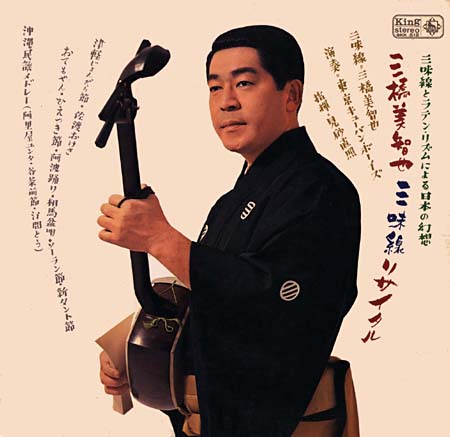|
The Japan Night - Return from Japan
No other culture is so well-known for its ability to assimilate and adapt to foreign influences as is Japan over the last 100 years. Wandering through modern Tokyo, one is confronted with a strange mixture of extremely different coexisting styles. On the surface the westernization (or actually the American influence) seems to be overwhelming, but the sensitive visitor is always reminded of disconnection and therefore his ability to understand the sensitivity of the Japanese society is very limited. The aesthetics that we Westerners are familiar with through museums, films and books cannot be found on the street, it’s every-day-life aspect seems to survive only in the culinary tradition. Instead one can happen upon a Tango bar directly imported from Buenos-aires where one can hear Japanese aficionados listen to a Japanese band sounding more original than any Argentinian band. Similar experiences can be made in a country music club, blues or jazz bar.
But there are all kinds of strange hybrid forms, the one-of-a-kind mixtures of Western and Japanese elements, and they seem to be much more intriguing. Music that can only be created in Tokyo or Osaka and perhaps only for a limited time. The "Japan Night" gives a very subjective sound picture of Japan, where traditional elements are welcome as well as modern, strange and otherwise interesting sonic experiences.
Back from Japan. Again we dive into the foreign and so often surprising (and mostly only apparently) familiar sounds of Japan. Behind the perfect assimilation of as good as all musical styles, very individual and strange remodelings and interpretations are hidden. Much like the rapidly growing architecture of Tokyo that playfully and without mercy allows incoherent forms to merge into a new atmosphere, we make our way through the most diverse pieces of the Japanese music production. They never really seem to fit, but in some way have something in common. Like everywhere else, you can find unique forms of musical expression inspired by the search for the distant, the Japanese Gamelorchersta, the Tango band, etc.. Sound-art, -sculpture and -installation have a tradition here and no other country pays as much attention to sound in public spaces as Japan: every subway stop, the green pedestrian light, the arrival of the elevator - everything is accompanied by a musical sound; short melodies soon forgotten, present, but without occupying one's attention for long. Japan's cities could be identified by their sound alone. Naturally, the commercial aspect of music is always a major consideration and alongside the typical American pop idols that are of little interest, more individual representatives of easy-listening, neo-exotica, techno and other forseeable trends develop. Among them are musicians that use traditional elements like the singer Takio Ito or Michihiro Sato who recorded with John Zorn already years ago. Sato plays the Tsugaru-samisen, a type of Japanese three stringed banjo and in his terrific band Sato Michihiro Tsugaru-Shamisen Gakudan the sisters Kaori and Kizu Shigeri play traditional percussion.

Enka
The most typical form of Japanese pop music for the last 100 years was, with uninterupted success, Enka. For proper musical ethnologists and watchmen of good taste, it is a pure horror, not even worth mentioning. The typical Japanese way of singing, using a lot of vibrato and a strange mixture of Western and Japanese instruments are the ingredients of the unmistakeable sound. The texts cover the entire pallete of daily life: love, social comment ... Influences of Western music, (classical and popular forms with some echo of the first Western music in Japan, namely military music) are combined with Japanese folkmusic and are generally expressed through pentatonic melody. Enka has produced a number of stars that are known only in Japan, Minami Haruo being the most famous. Hideo Murata was heard in many of Akira Kurosawas films, one of the most interesting singers is Kitajima Saburo.
Girlies
Naturally girlie bands are not a Japanese-only phenomenon, but nowhere else you find as many as in Japan and nowhere are they so successful. On the one hand, that could indicate a growing emancipation of young women who are influenced by the pop culture. But they are usually immediately taken in by the music industry and in this sense, still disciplined by society. On the other hand, school girls are still an ever growing favorite object of the erotic phantasies of not only older Japanese men. Trash, jazz, pop and rock, or easy-listening, there are female-only bands covering every genre and not all of them are completely dependent on their mostly male producers.
|